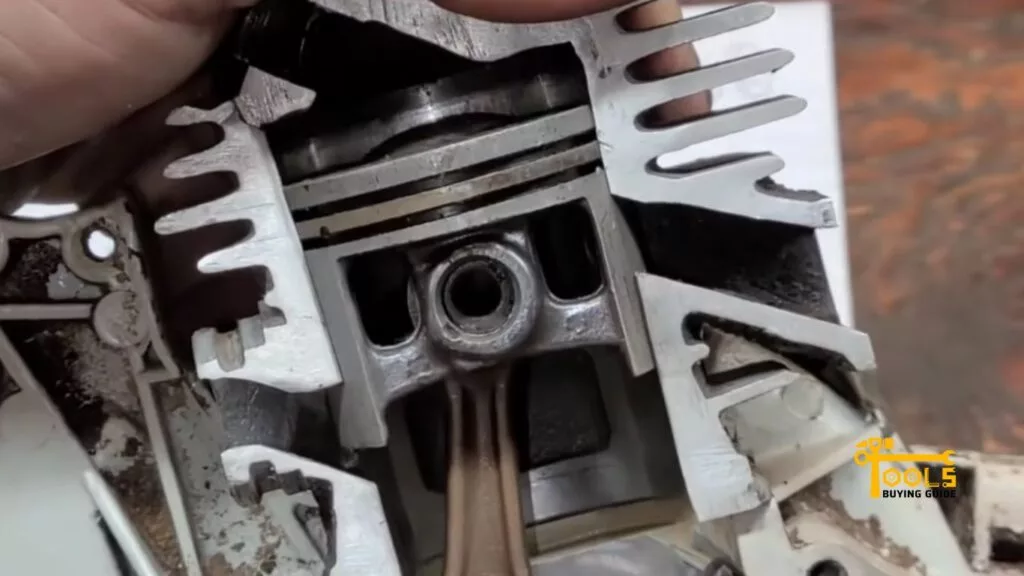
A chainsaw is a great tool for cutting, pruning, and shaping trees. But if you’re looking for a more powerful tool, why not port your chainsaw? Porting a chainsaw involves adjusting the dimensions of the ports and combustion chambers to improve engine power. Porting a chainsaw is a great way to give your chainsaw more oomph and make it even better for tough jobs. Read on to learn how to port a chainsaw step-by-step.
How do I port a chainsaw?
To know how to port chainsaw, reason. All you need are some basic tools and knowledge.
Here’s what you will need to get started:
- Chainsaw
- Socket and ratchet set
- Safety gloves, masks, and glasses
- A thin gasket or O-ring
- Allen keys set
- Measuring Guage
- Muffler porting tools
- Smoothing tool (like an electric drill)
- Sandpaper or discs for smoothing the ports
- Cloth for wiping down the ports
- Lubricant spray
Now that you’ve got your materials, let’s start porting your chainsaw.
Step 1: Get ready to port your chainsaw
The first step in porting your chainsaw is to ensure it’s well-maintained and debris-free. Start by cleaning the air filter and removing any dirt or residue that might have accumulated over time. Then, inspect the spark plug and replace it if necessary.
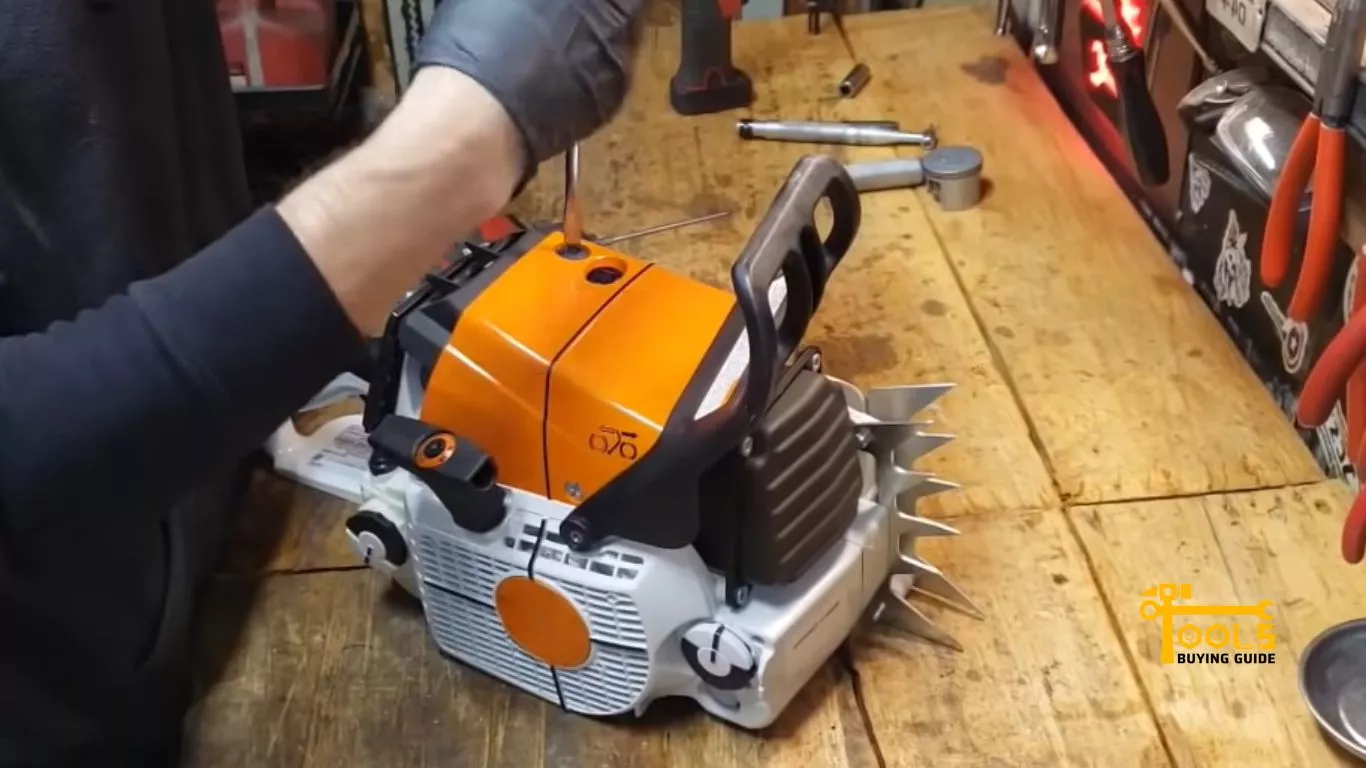
Next, disconnect the spark plug from the muffler. This will ensure that no sparks are created while working on the chainsaw. Also, remove any foreign objects or debris that might be lodged inside.
Step 2: Remove the top of the muffler
Now it’s time to get down to business and remove the muffler from your chainsaw. Start by removing the screws that are holding the top cover in place. This will give you access to the ports and combustion chamber.
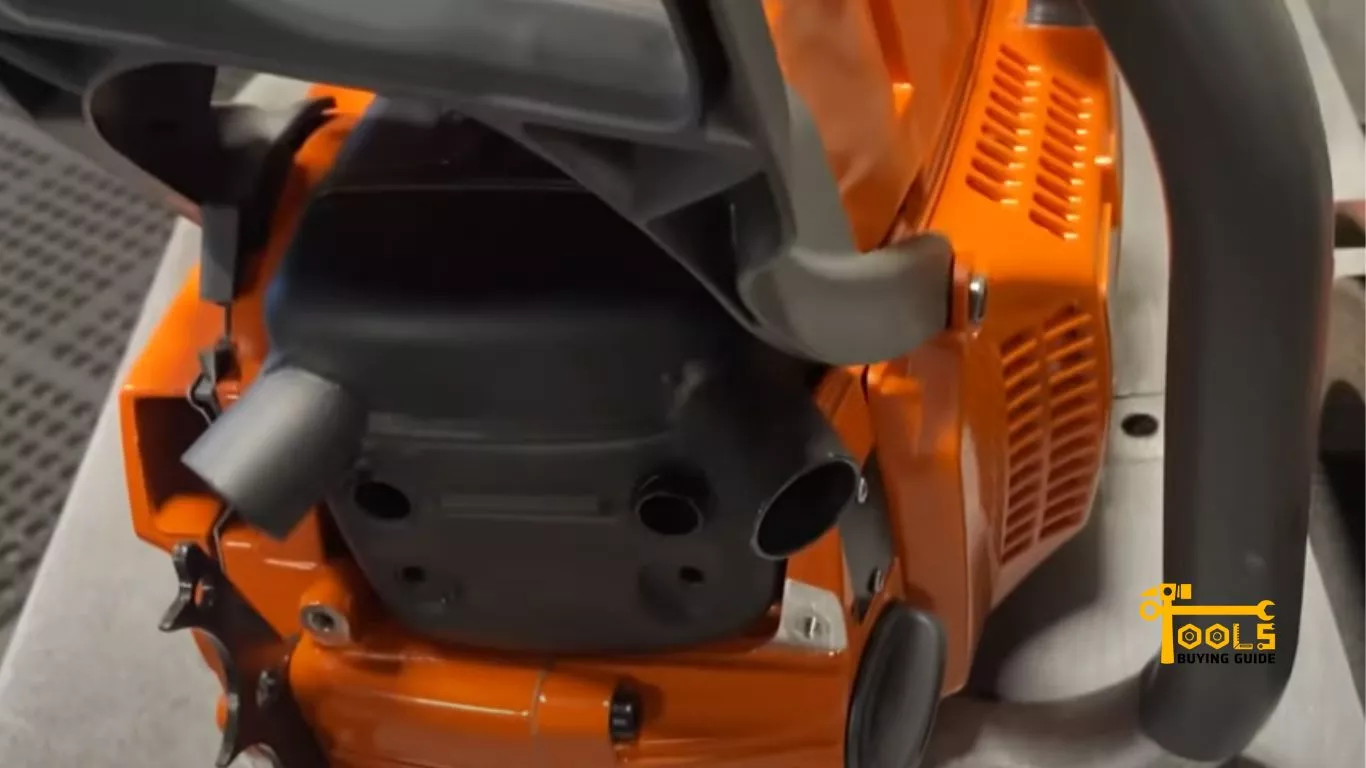
Once the top is off, use a ratchet or Allen key to loosen the four screws that secure the muffler. Then, carefully remove the muffler from the chainsaw and set it aside.
Step 3: Widen and de-burr the intake and exhaust ports
Now that you can access the ports, it’s time to start porting them. First, inspect the intake and exhaust ports for rough edges or burrs. If you find any, use a file to smooth them out.
Once they’re smooth, it’s time to widen the ports with a porting tool. Insert the tool into each port and turn it slowly to increase its size. Do this until you achieve the desired size and shape.
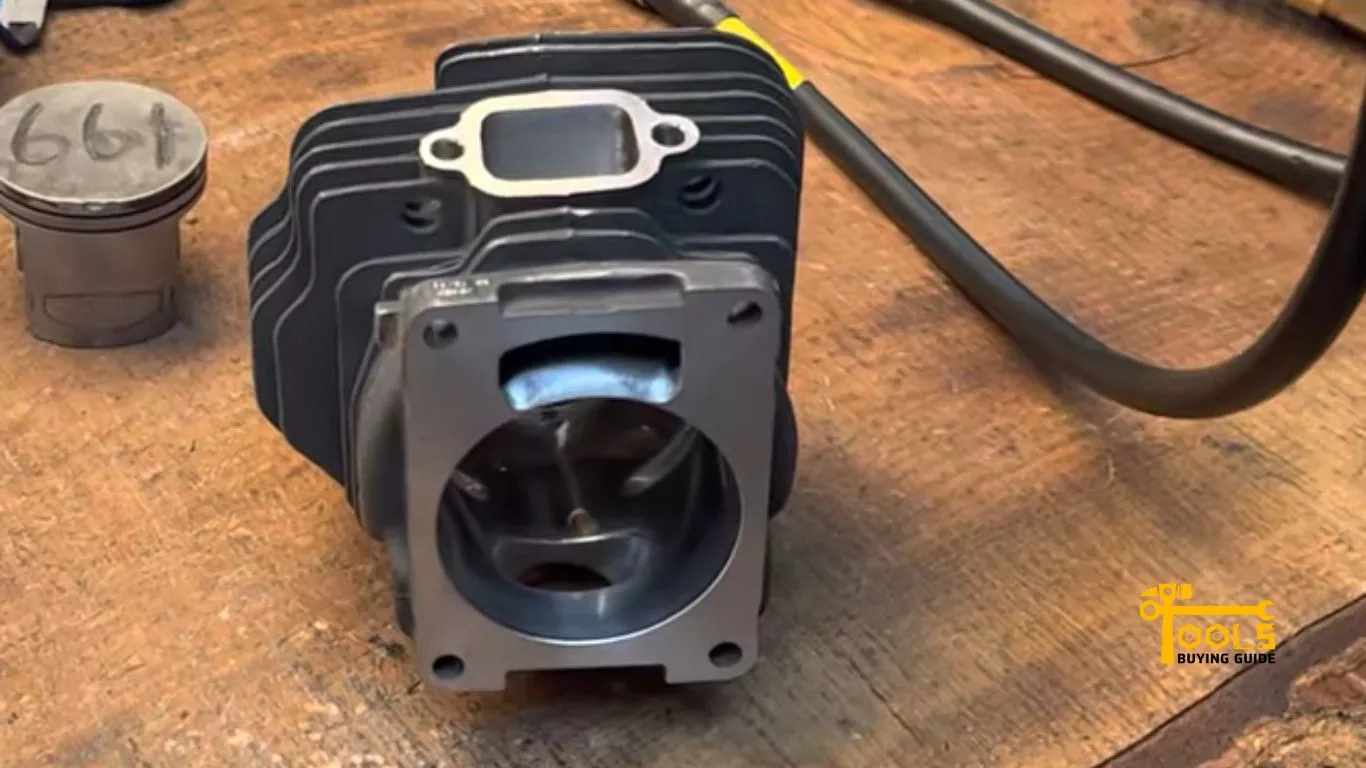
Next, use a small wire brush to deburr the ports from the inside. This will make sure there are no sharp edges that could damage the engine.
Step 4: Cutting and re-shaping metals
Once you’ve widened and deburred your ports, it’s time to start cutting and reshaping the metals. Start using a pair of pliers to remove excess metal on the exhaust port flange.
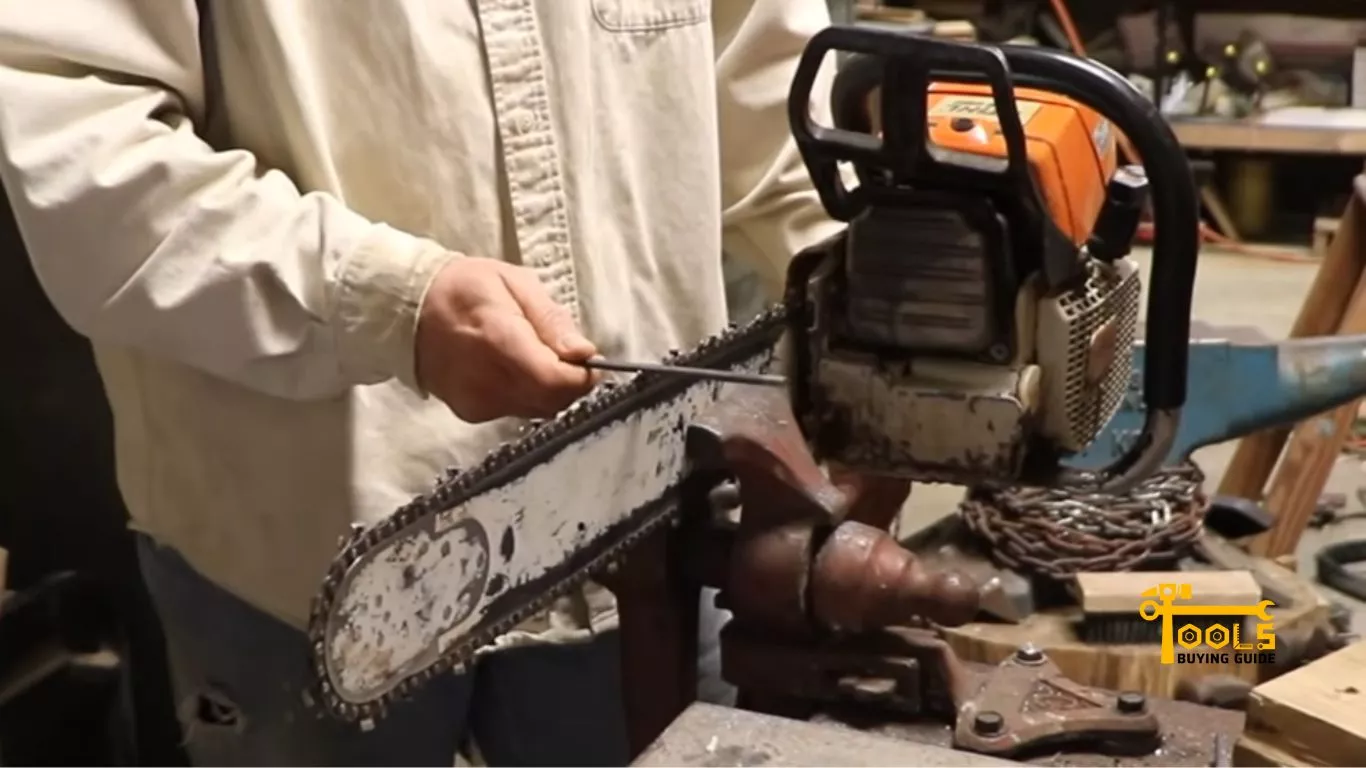
Next, use an electric drill or smoothing tool to reshape the metals inside the ports. This will help improve airflow and increase engine power. Be sure to take your time with this step and use the appropriate safety equipment.
Step 5: Placing the muffler top and finishing up
Once you’re done porting the ports and reshaping the metals, it’s time to finish up. Start by placing the muffler back onto the chainsaw and securing it with four screws.
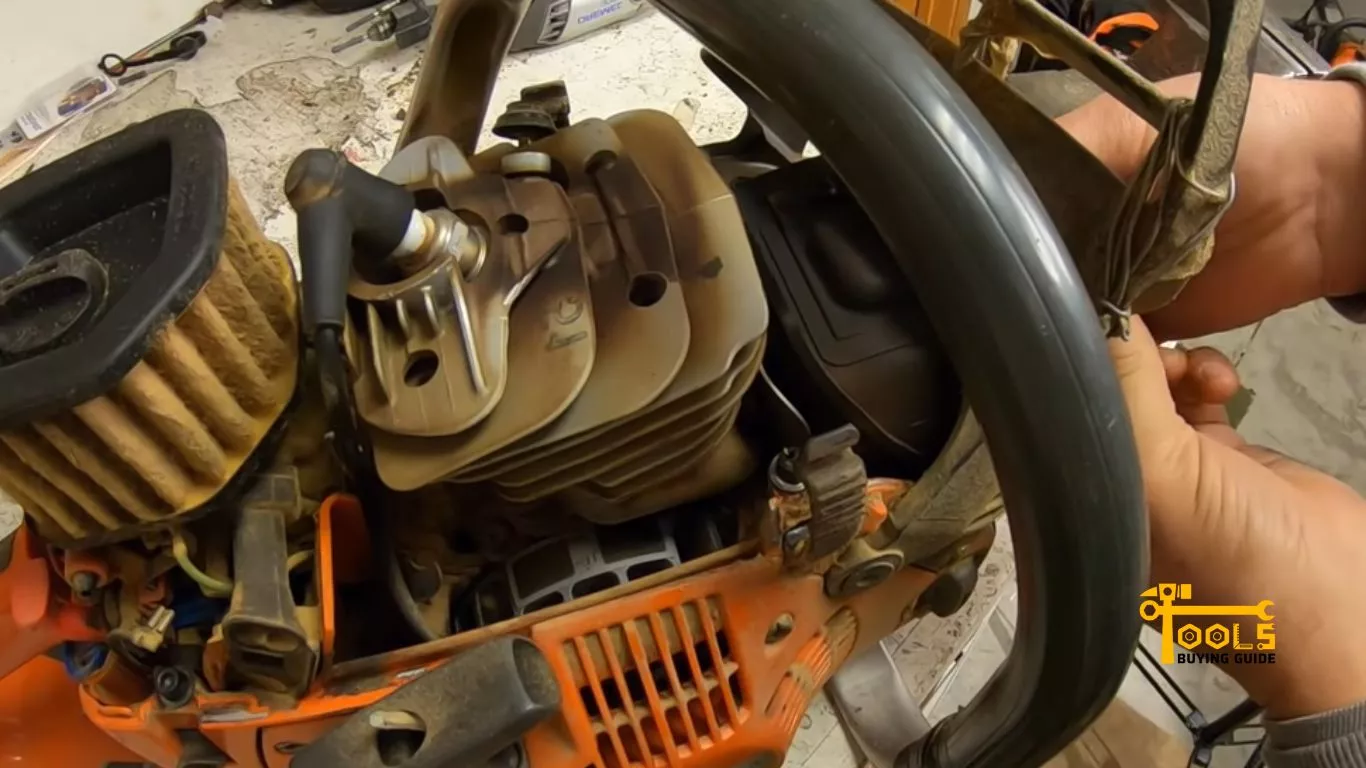
Next, place the gasket or O-ring around the top of the muffler for added protection against oil leaks. Finally, re-attach the spark plug and top cover. This will complete the process of porting your chainsaw.
Step 6: Drilling on the muffler
Now, if you want to take it a step further and get even more power from your chainsaw, you can drill the muffler. Start by placing the muffler in a vice or secure clamp, and use an electric drill to make small holes in the bottom part of the muffler.
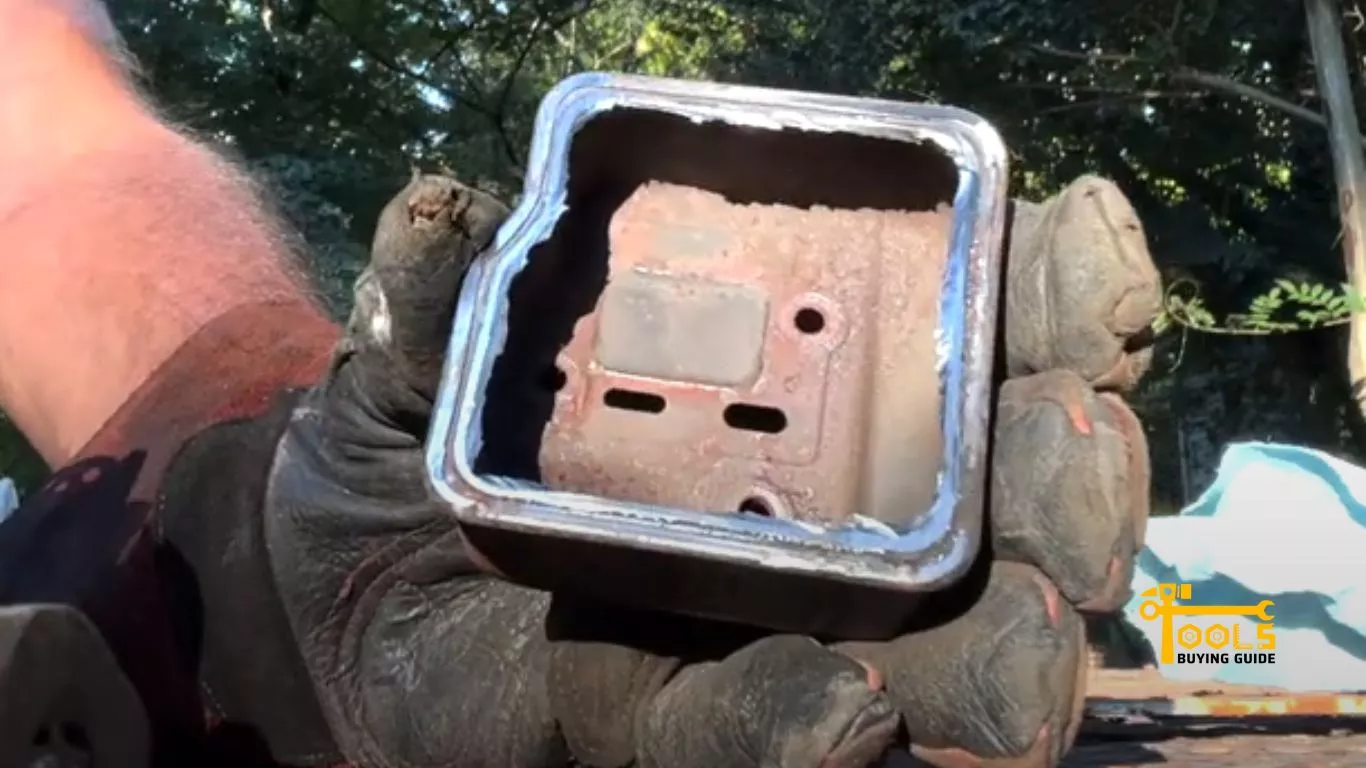
To improve exhaust flow, you can also make larger holes and slots in the top part. Keep drilling until you reach your desired size and shape, making sure not to overdo it, or you could damage your ported chainsaw.
Step 7: Polishing and cleaning the ports
The final step in chainsaw porting is to polish and clean the ports. Start using a cloth or paper towel to wipe off any residue inside the ports. Then, use a piece of sandpaper or disc to buff and polish the metal surfaces.
Finally, spray some lubricant on a clean cloth and wipe down all of the ports. This will help keep your chainsaw running smoothly and maintain its power.
Learn More about Tape Measure Reading
Frequently Asked Questions
Woods porting is a technique used to modify or improve the performance of an internal combustion engine, specifically a chainsaw. This involves adjusting the dimensions and shape of the ports and combustion chambers to increase power output.
Engaging tinman chainsaws is easy. Start by pulling the choke lever outward to activate the cold start system. Then, set the throttle to full and press the primer bulb until you feel resistance. Finally, pull the starter cord slowly until you hear or feel the engine catch.
The proper way to hold a chainsaw is with both hands. Ensure your left hand is closest to the engine and your right is near the rear handle. Your arms should be slightly bent, and you should maintain a firm grip on both handles. Do not use just one hand when operating a chainsaw, which can lead to accidents.
The easiest way to start a chainsaw is by following the steps outlined above: pull the choke lever outward, set the throttle to full, press the primer bulb until you feel resistance, and finally, pull the starter cord slowly. If done correctly, your chainsaw should start up easily. If it doesn’t, ensure all connections are secure and try again.
If the spark plug is dirty or worn, it won’t create a spark, and the engine won’t fire. Additionally, if the air filter is clogged or the fuel isn’t fresh, it can be harder to start your chainsaw. Lastly, incorrect settings on the choke lever or throttle can make it difficult to start your chainsaw. Ensure all these components are in good working order before starting your saw.
The two approved methods for starting a chainsaw are pull-starting and crank-starting. Pull-starting is the more common of the two, using a starter cord to engage the engine. On the other hand, crank-starting involves turning a handle to rotate an internal flywheel and ignite the spark plug. Both methods should only be done with hands and the appropriate safety gear.
There are a few important things to avoid when using a chainsaw. First, never attempt to use a chainsaw without wearing the proper safety equipment. Additionally, do not operate your saw near flammable materials or in wet conditions. Lastly, do not try to cut more than you can handle.
You should always pull the saw towards you when cutting with a chainsaw. This is because pushing a chainsaw can cause it to kick back and injure you or someone else. Keep your arms slightly bent and maintain a firm grip on both handles when operating your saw. Also, keep the chain properly tensioned so it doesn’t become too loose or tight.
Conclusion
So, if you’re looking to get your chainsaw roaring with a bit more power and torque, porting it is the way to go. This guide on how to port a chainsaw has hopefully given you the confidence and knowledge to get started on your project.
You’re one step closer to becoming a master chainsaw porter. With a few simple steps, you can easily port your chainsaw. Now that you know the basics, you can experiment with different porting techniques to get the most out of your saw. So go ahead – grab your goggles and gloves, and get sawing.


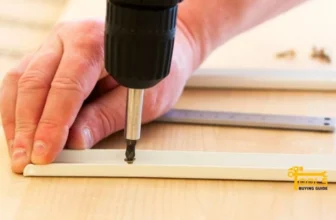
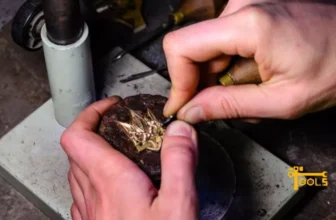
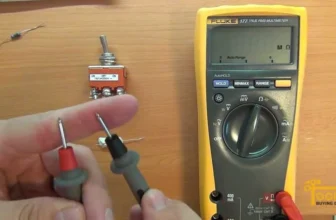
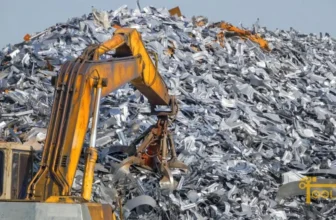
[…] Read Also: How To Port a Chainsaw? […]
[…] Its tool-free tensioning system and auto-sharpening make it an ideal choice for those seeking quality and convenience. However, the corded nature of the saw makes it less portable than a battery-powered or gas-powered model. […]
[…] if you’re ready to take on your next cutting project with confidence, take a closer look at these top-rated chainsaws and make your choice today. And if you still have […]